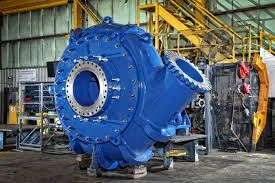Gujarati
- Afrikaans
- Albanian
- Amharic
- Arabic
- Armenian
- Azerbaijani
- Basque
- Belarusian
- Bengali
- Bosnian
- Bulgarian
- Catalan
- Cebuano
- Corsican
- Croatian
- Czech
- Danish
- Dutch
- English
- Esperanto
- Estonian
- Finnish
- French
- Frisian
- Galician
- Georgian
- German
- Greek
- Gujarati
- Haitian Creole
- hausa
- hawaiian
- Hebrew
- Hindi
- Miao
- Hungarian
- Icelandic
- igbo
- Indonesian
- irish
- Italian
- Japanese
- Javanese
- Kannada
- kazakh
- Khmer
- Rwandese
- Korean
- Kurdish
- Kyrgyz
- Lao
- Latin
- Latvian
- Lithuanian
- Luxembourgish
- Macedonian
- Malgashi
- Malay
- Malayalam
- Maltese
- Maori
- Marathi
- Mongolian
- Myanmar
- Nepali
- Norwegian
- Norwegian
- Occitan
- Pashto
- Persian
- Polish
- Portuguese
- Punjabi
- Romanian
- Russian
- Samoan
- Scottish Gaelic
- Serbian
- Sesotho
- Shona
- Sindhi
- Sinhala
- Slovak
- Slovenian
- Somali
- Spanish
- Sundanese
- Swahili
- Swedish
- Tagalog
- Tajik
- Tamil
- Tatar
- Telugu
- Thai
- Turkish
- Turkmen
- Ukrainian
- Urdu
- Uighur
- Uzbek
- Vietnamese
- Welsh
- Bantu
- Yiddish
- Yoruba
- Zulu
Telephone: +86 13120555503
Email: frank@cypump.com
ઓગસ્ટ . 29, 2024 02:21 Back to list
High-Quality Rubber-Lined Slurry Pumps for OEM Manufacturers
Rubber-Lined Slurry Pumps for OEM Manufacturers A Key to Enhanced Efficiency and Longevity
In the realm of slurry handling, the selection of the right pump is crucial for ensuring efficiency and reliability. Among the various options available, rubber-lined slurry pumps have gained substantial popularity, especially among Original Equipment Manufacturers (OEMs). These pumps are designed to accommodate the challenging nature of slurry transport, which often involves abrasive materials and aggressive fluids. Here, we delve into the features, benefits, and considerations surrounding rubber-lined slurry pumps for OEM manufacturers.
Understanding Rubber-Lined Slurry Pumps
Rubber-lined slurry pumps are engineered with an inner lining made of high-quality rubber compounds that offer significant resistance to wear and corrosion. This design makes them particularly suitable for transporting slurry—a mixture of solids and liquids that can be highly abrasive and chemically aggressive. Typical applications include mining, mineral processing, and wastewater management. The rubber lining acts as a buffer, protecting the pump's metal components from degradation, thus extending the service life of the pump.
Benefits for OEM Manufacturers
1. Enhanced Durability The primary advantage of rubber-lined slurry pumps is their robustness. The rubber lining absorbs impact and reduces the wear on the pump's metallic components, resulting in a longer operational lifespan. For OEM manufacturers, this translates to lower maintenance costs and enhanced reliability.
2. Corrosion Resistance In many industrial applications, the slurries being handled may contain corrosive agents. Rubber-lined pumps offer excellent resistance to a wide range of chemicals, making them suitable for use in aggressive environments, reducing the risk of failure and providing peace of mind to OEMs.
'rubber-lined slurry pump for oem manufacturers'

3. Improved Efficiency The hydraulic design of rubber-lined slurry pumps maximizes flow rates while minimizing energy consumption. This efficiency is critical for OEM manufacturers who are looking to optimize performance and reduce operational costs for their end-users.
4. Customizability OEM manufacturers often require bespoke solutions to meet their specific application needs. Rubber-lined slurry pumps can be customized in terms of size, capacity, and lining materials, enabling manufacturers to provide tailored solutions that enhance performance and meet client specifications.
5. Lower Noise Levels Rubber has inherent sound-dampening properties, which can help reduce the noise generated during operation. This is an essential consideration for many industries where noise pollution must be minimized, enhancing the working environment for operators.
Considerations for Choosing Rubber-Lined Slurry Pumps
When selecting rubber-lined slurry pumps, OEM manufacturers should consider the specific slurry characteristics, such as particle size, viscosity, and chemical composition. These factors will dictate the appropriate pump design, material selection, and lining thickness. Additionally, it's crucial to evaluate the total cost of ownership, including initial investment, maintenance needs, and expected lifespan, to make an informed decision.
In conclusion, rubber-lined slurry pumps represent a vital component for OEM manufacturers operating in demanding environments. By investing in these specialized pumps, manufacturers can significantly enhance productivity and reliability, delivering superior solutions that meet the rigorous demands of slurry handling applications. As industries continue to evolve and face new challenges, the adoption of advanced pumping technologies will be essential for maintaining competitive edge and operational excellence.
-
High-Performance Air Pumps for Sand & Gravel | Efficient Transport
NewsAug.03,2025
-
ISG Series Vertical Pipeline Pump - Chi Yuan Pumps Co., LTD.|Energy Efficiency, Corrosion Resistance
NewsAug.03,2025
-
ISG Series Pipeline Pump - Chi Yuan Pumps | Energy Efficiency&Compact Design
NewsAug.03,2025
-
ISG Series Vertical Pipeline Pump - Chi Yuan Pumps Co., LTD.|High Efficiency, Low Noise, Durable
NewsAug.02,2025
-
ISG Series Vertical Pipeline Pump - Chi Yuan Pumps | High Efficiency, Low Noise
NewsAug.02,2025
-
ISG Series Vertical Pipeline Pump- Chi Yuan Pumps Co., LTD.|High Efficiency&Compact Design
NewsAug.02,2025










